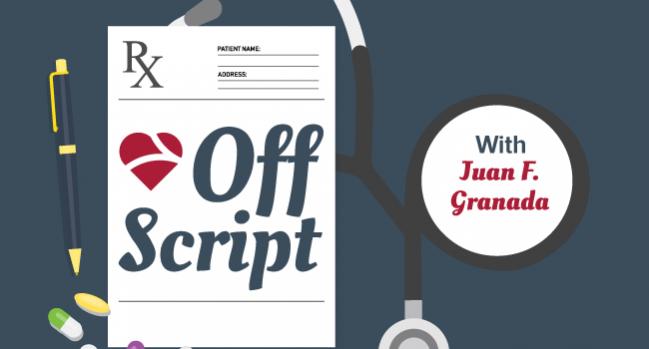Restarting In-Person Interventional Meetings: A Delicate but Necessary Juggling Act
As meetings like TCT take tentative steps back to face-to-face formats, online versions will remain. Let’s proceed with caution.

At the top of the list of ideas I brought to the job when I became the CEO at the Cardiovascular Research Foundation was the digitalization of our medical meetings. The reasons, I figured, were obvious.
Over the last several years, attendance at medical meetings had plateaued and was limited to a highly selected group of physicians, while inequity in access to medical education continued to rise. Something different needed to be done. Providing online access to all our meetings seemed like the most practical way to educate a larger number of people in a more cost-effective way. So we got to work and, over the next 12 months, formed a dedicated team to develop a digital strategy capable of fulfilling the needs and challenges of today’s environment.
Fast-forward to March 2020. The pandemic forced unprecedented changes, and the need to pivot into a full digital environment was abrupt and necessary. Despite the challenges of putting together a comprehensive academic program in a fully digital format, the transition provided a unique opportunity to test-drive our first prototype of a fully virtual event while the entire world was in complete lockdown.
The results were striking. Online attendance to TVT, TCT and CTO skyrocketed, including a dramatic increase in the number of physicians attending from countries that are typically underrepresented. What’s more, the option of watching sessions “on demand” offered unique opportunities for busy clinicians to attend on different time zones.
But while digital meetings have proved essential throughout the pandemic, there are aspects of in-person meetings that all of us are eager to get back to. Some of the most important things happening at in-person meetings occur beyond the podium and are essential for advancing our field. Established faculty help mentor young physicians and develop the next generation of leaders. New clinical data are presented challenging the status quo and serve as the basis for the development of new clinical trials and innovations in the field. Spontaneous discussions of new ideas, approaches, and innovations face-to-face are key and must involve not just clinical voices, but also representatives from the fields of engineering, financing, and industry. Unfortunately, this symbiotic ecosystem, opaque to many, is difficult to measure and almost impossible to replicate in a virtual format.
As the COVID-19 months dragged on, I became increasingly concerned about the lasting effects of the pandemic on research, innovation, and physician education. The training of fellows has been greatly affected, with many struggling to perform enough procedures to become proficient. Enrollment in large clinical studies has been severely impacted and analysis of critical clinical data has been significantly delayed. Innovation has also been drastically compromised by delays in protocol approvals, patient recruitment, and limited funding. The impact is still unknown, but I predict many key projects are already running years behind and new ones will likely take several years before they are introduced into the clinical arena.
In August of 2021, we made a final decision: TCT 2021 would be an in-person meeting, albeit smaller than usual, with a simultaneous broadcast for those who could not, for whatever reason, attend in-person. I received calls from very influential faculty members and organizations about the wisdom of the decision to continue with an in-person component, especially as the Delta wave swept through Florida and case counts climbed.
The news in September that the American Heart Association had decided to go fully virtual made our position even tougher. Internally, we faced different challenges. Running a hybrid TCT event in our current environment is not only operationally more complex but also more expensive.
But we had made up our minds—our field is already suffering the devastating effects of the pandemic and we have only two options: stop and withdraw or adapt and move forward. We chose the latter as we feel that postponing critical research and education another year will push us back even farther. Also, we feel we have all the components in place needed to run a successful meeting. A mandatory-vaccination meeting with limited attendance will greatly decrease the risk of infection among attendees, faculty, and staff. We also have tools to test and track people who attend.
We’ve ended up creating what we believe is the meeting of the future: an open-concept meeting that will live-stream all content, allowing for both the dissemination of academic information as well as the on-site interaction peers and colleagues. We expect this TCT will have the largest attendance in the history of our organization with the use of this hybrid approach.
If the past 18 months have taught us anything, though, it’s that online learning has its pros and cons.
For one, all of us have experienced the deleterious effects of prolonged academic isolation and digital exposure and are craving a return to real-life interactions. We’ve also seen that nearly anyone with the ability to organize an academic event was able to do so with minimal infrastructure, as compared with all the moving parts of an in-person conference. This rapid proliferation of online meetings has the potential to impact the quality and integrity of medical education.
There is no question that industry participation in the support and execution of medical meetings is key. Our field is technology-dependent, and our collective success depends on sustaining a transparent relationship with technology developers and industry sponsors. Transparency is essential. Commercial bias is difficult to control even in large in-person meetings. In more-structured events, industry influence is constantly monitored and managed by independent CME committees. But in smaller, unregulated academic events, there is greater potential to introduce bias and put commercial interests above academic value and that lack of transparency is only amplified in an online setting.
My view is that as meetings move wholly or partially online, they should be subject to the same standards of large in-person events. Conference programming must relevant and balanced. Industry-sponsored sessions and satellites must be clearly distinguished from core program content. Conflicts of interests among presenters, commentators, and chairs must be clearly stated.
I am strong believer in the future of digital education, but we still need to pressure test its real potential, challenges, and dangers in more stable and predictable conditions than the COVID-19 pandemic has permitted. While online education has the potential to exponentially expand the educational reach to the wider medical community across the globe, in-person education spawns a greater degree of creativity, collaboration, and innovation.
Online and in-person education, instead of competing, can complement each other. And we need both. My view is that we need both to move forward and to do so now.
Off Script is a first-person blog written by leading voices in the field of cardiology. It does not reflect the editorial position of TCTMD. Granada is the CEO of the Cardiovascular Research Foundation, which publishes TCTMD, and a course director for TCT 2021.
Juan F. Granada, MD, is the President and Chief Executive Officer of the Cardiovascular Research Foundation (CRF). A renowned leader…
Read Full Bio




Comments